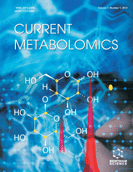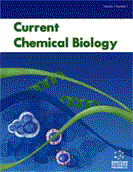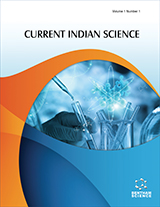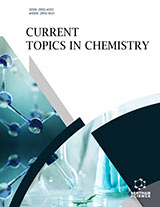Abstract
Background: Cyanobacteria are the predominant atmospheric nitrogen fixers of the aquatic as well as terrestrial ecosystems. Harvesting of solar energy for photosynthesis exposes cyanobacteria simultaneously to lethal doses of ultraviolet radiation (UVR) in their natural brightly light habitats. To counteract the damaging effect of UVR, cyanobacteria synthesize novel secondary metabolites such as mycosporine-like amino acids (MAAs) and scytonemin. By the application of the “omics” techniques cyanobacterial molecular biology is benefitted tremendously. Traditionally, only small sets of metabolites are quantified in targeted metabolome approaches. The development of separation technologies coupled with mass-spectroscopy and nuclear-magneticresonance based identification of low molecular mass molecules allows the profiling of several metabolites of different chemical nature.
Objective: MAAs and scytonemin are highly photostable and act as potent photoprotectant and antioxidant hence can be biotechnologically exploited by the cosmetic industry. Till date, 23 MAAs such as shinorine, mycosporine glycine, palythine, palythinol, asterina-330 and porphyra-334, and 7 different forms of scytonemin such as oxidized and reduced scytonemin, scytonemin-3a-imine and scytonemin A have been reported in various cyanobacteria. Metabolome analysis could be applied to characterize changes in the cyanobacterial primary and secondary metabolites such as MAAs and scytonemin under diverse environmental conditions. Untargeted metabolite profiling has the potential to identify numerous novel metabolites; however, de novo identification of metabolites from spectral features remains a challenge.
Conclusion: This review deals with the structure, biosynthesis and various techniques involved in the metabolomic profiling of cyanobacterial UV protective compounds scytonemin and MAAs.
Keywords: Cyanobacteria, ultraviolet radiation, mycosporine-like amino acids, scytonemin, spectroscopy, metabolomics; high performance liquid chromatography
Graphical Abstract
Current Metabolomics
Title:Metabolomic profiling of cyanobacterial UV-protective compounds
Volume: 5 Issue: 2
Author(s): Jainendra Pathak, Rajneesh, Haseen Ahmed, Richa and Rajeshwar P Sinha*
Affiliation:
- Laboratory of Photobiology and Molecular Microbiology, Centre of Advanced Study in Botany, Institute of Science, Banaras Hindu University, Varanasi-221005,India
Keywords: Cyanobacteria, ultraviolet radiation, mycosporine-like amino acids, scytonemin, spectroscopy, metabolomics; high performance liquid chromatography
Abstract: Background: Cyanobacteria are the predominant atmospheric nitrogen fixers of the aquatic as well as terrestrial ecosystems. Harvesting of solar energy for photosynthesis exposes cyanobacteria simultaneously to lethal doses of ultraviolet radiation (UVR) in their natural brightly light habitats. To counteract the damaging effect of UVR, cyanobacteria synthesize novel secondary metabolites such as mycosporine-like amino acids (MAAs) and scytonemin. By the application of the “omics” techniques cyanobacterial molecular biology is benefitted tremendously. Traditionally, only small sets of metabolites are quantified in targeted metabolome approaches. The development of separation technologies coupled with mass-spectroscopy and nuclear-magneticresonance based identification of low molecular mass molecules allows the profiling of several metabolites of different chemical nature.
Objective: MAAs and scytonemin are highly photostable and act as potent photoprotectant and antioxidant hence can be biotechnologically exploited by the cosmetic industry. Till date, 23 MAAs such as shinorine, mycosporine glycine, palythine, palythinol, asterina-330 and porphyra-334, and 7 different forms of scytonemin such as oxidized and reduced scytonemin, scytonemin-3a-imine and scytonemin A have been reported in various cyanobacteria. Metabolome analysis could be applied to characterize changes in the cyanobacterial primary and secondary metabolites such as MAAs and scytonemin under diverse environmental conditions. Untargeted metabolite profiling has the potential to identify numerous novel metabolites; however, de novo identification of metabolites from spectral features remains a challenge.
Conclusion: This review deals with the structure, biosynthesis and various techniques involved in the metabolomic profiling of cyanobacterial UV protective compounds scytonemin and MAAs.
Export Options
About this article
Cite this article as:
Pathak Jainendra, Rajneesh , Ahmed Haseen, Richa and Sinha P Rajeshwar*, Metabolomic profiling of cyanobacterial UV-protective compounds, Current Metabolomics 2017; 5 (2) . https://dx.doi.org/10.2174/2213235X04666160829162640
| DOI https://dx.doi.org/10.2174/2213235X04666160829162640 |
Print ISSN 2213-235X |
| Publisher Name Bentham Science Publisher |
Online ISSN 2213-2368 |
 44
44 2
2Related Articles
-
Mini-Review: Polyamines Metabolism, Toxicity and Potent Therapeutical Use
Anti-Infective Agents The Crosstalk between Tissue Engineering and Pharmaceutical Biotechnology: Recent Advances and Future Directions
Current Pharmaceutical Biotechnology Significance of Green Synthetic Chemistry from a Pharmaceutical Perspective
Current Pharmaceutical Design Matrix Gelatinases in Atherosclerosis and Diabetic Nephropathy: Progress and Challenges
Current Vascular Pharmacology The Immunohistochemical Assessment of HPV Related Adenocarcinoma: Pathologic and Clinical Prognostic Significance
Current Pharmaceutical Design Fluorescence Detection of MMP-9. I. MMP-9 Selectively Cleaves Lys-Gly-Pro-Arg-Ser-Leu-Ser-Gly-Lys Peptide
Current Pharmaceutical Biotechnology p53-Induced Apoptosis and Inhibitors of p53
Current Medicinal Chemistry α-Glucosidase Inhibitory Effect and Antioxidant Activity of the Extracts of Eighteen Plant Traditionally Used in Algeria for Diabetes
Current Enzyme Inhibition Therapeutic Applications of Crocus sativus L. (Saffron): A Review
The Natural Products Journal Environmentally Benign Synthetic Protocol for the Synthesis of Spiroquinazolinones Using Sustainable and Recyclable Choline Chloride Based Deep Eutectic Mixture
Current Organic Synthesis Determination of Some Kinetic and Characteristic Properties of Glutathione S-transferase from Bovine Erythrocytes
Protein & Peptide Letters Prediction and Analysis of Hepatocellular Carcinoma Related Genes Using Gene Ontology and KEGG
Current Bioinformatics Structure-Activity Relationships of Flavonoids
Current Organic Chemistry Structures and Properties of Multi-stranded Nucleic Acids
Current Organic Chemistry Nanotechnology Advancements in the Diagnosis and Prevention of COVID-19: Past and Future
Coronaviruses Postoperative Thoracic Epidural Anesthesia in Gastrointestinal Surgery: Outcomes, Quality of Life, and Current Controversies
Current Drug Therapy Bioinformatic Tools Identify Chromosome-Specific DNA Probes and Facilitate Risk Assessment by Detecting Aneusomies in Extra-embryonic Tissues
Current Genomics Artificial Carriers: A Strategy for Constructing Antigenic/Immunogenic Conjugates
Current Topics in Medicinal Chemistry The Effect of Temperature on the Interaction of Phenanthroline-based Ligands with G-quadruplex: In Silico Viewpoint
Combinatorial Chemistry & High Throughput Screening Meet Our Editorial Board Member:
Reviews on Recent Clinical Trials









.jpeg)








